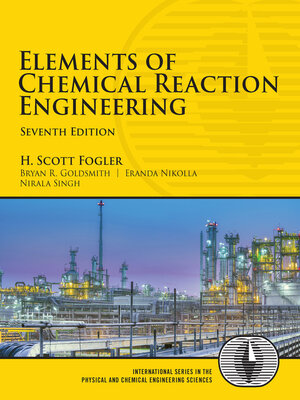Elements of Chemical Reaction Engineering
ebook ∣ International Series in the Physical and Chemical Engineering Sciences
By H. Scott Fogler

Sign up to save your library
With an OverDrive account, you can save your favorite libraries for at-a-glance information about availability. Find out more about OverDrive accounts.
Find this title in Libby, the library reading app by OverDrive.



Search for a digital library with this title
Title found at these libraries:
| Library Name | Distance |
|---|---|
| Loading... |
The Essential Textbook for Mastering Chemical Reaction Engineering—Now Fully Updated with Expanded Coverage of Electrochemical Reactors
H. Scott Fogler's Elements of Chemical Reaction Engineering, now in its seventh edition, continues to set the standard as the leading textbook in chemical reaction engineering. This edition, coauthored by Bryan R. Goldsmith, Eranda Nikolla, and Nirala Singh, still offers Fogler's engaging and active learning experience, with updated content and expanded coverage of electrochemical reactors.
Reflecting current theories and practices, and with a continuing emphasis on safety and sustainability, this edition includes expanded sections on molecular simulation methods, analysis of experimental reactor data, and catalytic reactions.
Leveraging the power of Wolfram, Python, POLYMATH, and MATLAB, students can explore the intricacies of reactions and reactors through realistic simulation experiments. This hands-on approach allows students to clearly understand the practical applications of theoretical concepts.
This book prepares undergraduate students to apply chemical reaction kinetics and physics to the design of chemical reactors. Advanced chapters cover graduate-level topics, including diffusion and reaction models, residence time distribution, and tools to model non-ideal reactors.
The seventh edition includes
About the Companion Web Site (umich.edu/~elements/7e/index.html)
Register your book for convenient access to downloads, updates, and/or corrections as they become available. See inside book for details.







